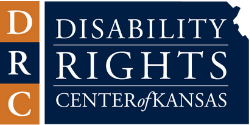Students with Disabilities and Bullying - A Resource for Parents
PDF Version: Students with Disabilities & Bullying
The Disability & Aging Crime Victims Unit helps students with disabilities address bullying.
Do you have a child with a disability who is being bullied in school?
Children with an IEP or 504 plan are entitled to a Free Appropriate Public Education (FAPE), but bullying can interfere with their education.
What is bullying?
- - Bullying is aggressive, unwanted, and repeated behavior.
- - Bullying can occur in person or online, through verbal attacks, messages or through social media.
- - Physical bullying can be easy to recognize, such as fighting, hitting, and name-calling.
- -Non-physical bullying can be harder to spot, like gossiping or intentionally leaving someone out.
- - A bully is someone who uses their power to control or harm others.
Steps to Take to Stop or Prevent Bullying
- - How to talk to your child about bullying? (pacer.org - 5 Important Fact Tab)
- - How to help your child advocate for themselves? (Student Action Plan) (pacer.org - Self Advocacy Tab)
- - How to advocate on your child’s behalf with the school? (Positive Strategies) (pacer.org - Rights and Policies Tab)
- - Peer Advocacy Program –students that volunteer and receive training to be your child’s allies/advocate (pacer.org - Peer Advocacy Tab)
- - Foster Acceptance – telling classmates about your child’s disability (pacer.org - Publications Tab)
Steps to Take if Bullying Continues to Occur
1. Document Bullying Incidents
- - Record the dates, names of those involved, and detailed descriptions of each incident as reported by your child.
2. Review School Policies
- - Locate and review your school district’s bullying policy on their website. If you can’t find it, request a copy. Every Kansas school district must have a bullying policy.
3. Review Your Child’s IEP or 504 Plan
- - Ensure you are familiar with its content to understand the accommodations and protections in place.
4. Notify the School
- - Send an email to the school principal and special education administrator/Title IV coordinator to report the bullying. Always have communications in writing.
- - Letter templates available online: National Bullying Prevention Center - Publications (pacer.org)
5. Request a Meeting if Necessary
- - If the email does not resolve the issues, request a meeting with your child’s IEP team, 504 coordinator and/or Title IV coordinator.
6. Prepare for the Meeting
- - You can email your suggested changes (accommodations) to the IEP team or 504 coordinator beforehand.
- View “How to Advocate for my Child at an IEP Meeting” Resource
Accommodations to Prevent Bullying
Some changes you can request in an IEP/504 Plan to prevent bullying:
- - Allow the student to leave class a few minutes early or a few minutes late to avoid interacting with certain students in the hallways.
- - Allow the student to sit at a desk away from the other student(s) who are bullying.
- - Establish open communication between teachers and parents to monitor behaviors.
- - Set goals and provide tools (such as fidget toys, non-verbal cues between the teacher and the student, taking a 15-minute break in a safe area, etc.) to help the student manage anxiety.
Remember, if it is not written down in the IEP or 504 plan, it is hard to hold the school accountable. Ensure everything is documented in writing.
DRC's Disability & Aging Crime Victims Unit (DACVU) is here to help. If you have questions about your rights or need assistance with a bullying situation, contact us.
This grant project is supported by subgrant number 24-VOCA-56 awarded through the Federal Office for Victims of Crime as administered by the Kansas Governor’s Grants Program. The opinions, findings, conclusions, or recommendations expressed in this publication, program, or exhibition are those of the author(s) and do not necessarily reflect the views of the Office of the Kansas Governor or the U.S. Department of Justice.
.png)






